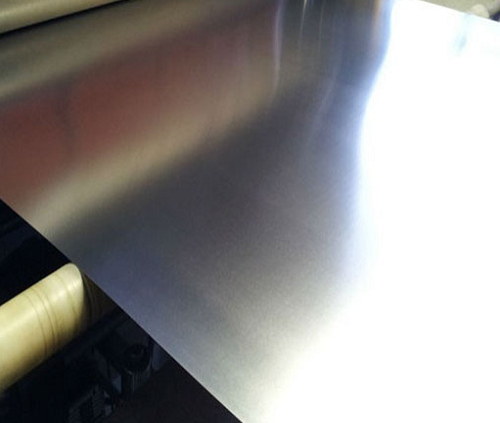Tinplate, also known as tin-plated iron, is a common name for electroplated tin steel sheet, with the English abbreviation SPTE, which refers to cold-rolled low-carbon steel sheet or steel strip coated with commercial pure tin on both sides. Tin is mainly used to prevent corrosion and rust. It combines the strength and formability of steel with the corrosion resistance, solderability and aesthetic appearance of tin in a single material. It has the characteristics of corrosion resistance, non-toxicity, high strength and good ductility.

The origin of the tinplate:
Tinplate originated in Bohemia (today in the Czech Republic and Slovakia). Since ancient times, this place has been rich in metal, advanced technology, and knows how to use water power to engage in machine manufacturing. It has been producing steel sheets for sale since the 14th century. Later in World War I, a large number of iron containers (cans) were made by the military of various countries and are still used today.
The benefit of the tinplate:
1. Opacity
In addition to the deterioration of food, light can also cause changes in proteins and amino acids. Vitamin C is more easily exposed to light. Tinplate causes it to interact with other food ingredients, causing a large loss. According to research analysis, the loss of vitamin C in transparent glass bottle is 14 times higher than that of dark bottled milk. Light also causes milk to produce oxidative odors, and the nucleus, methionine, etc. will lose nutritional value The opacity of tinplate makes vitamin C the highest preservation rate.
2. Good sealing
The barrier properties of packaging containers to air and other volatile gases are very important for the preservation of nutritional content and sensory quality. Comparison of various juice packaging containers proves that the oxygen transmission rate of the container directly affects the browning of the juice and the preservation of vitamin C; the preservation of vitamin C in metal cans, glass bottles, aluminum foil laminates, and cartons with low oxygen transmission rates Better, of which tin cans are the best.
Reduction of tin. The tin on the inner wall of tinplate interacts with the oxygen remaining in the container during filling, reducing the chance of food ingredients being oxidized. The reduction of tin has a good preservation effect on the flavor and color of light-colored fruits and juices. Therefore, the use of unpainted iron cans has better nutrition preservation than other packaging cans, and the brown changes are slight. The acceptability of flavor quality is good, and the shelf life is extended accordingly.


